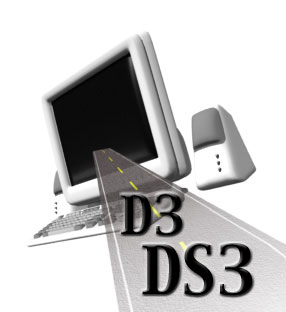For a long time, mid-size and large businesses have relied on DS3 services to fulfill their broadband internet needs. However, a new contender has emerged, aiming to either complement or even replace the well-established DS3 connection.
If your business requires more bandwidth than what bonded T1 lines can provide, you’re likely familiar with DS3. But how about D3?
D3 stands for DOCSIS 3.0, a cable broadband standard enabling HFC (Hybrid Fiber Cable) systems to deliver fiber-like speeds. In many cities, cable providers now offer 50 Mbps business connections, with some even reaching 100 Mbps, and even faster speeds expected soon. DOCSIS 3.0’s potential reaches 152 Mbps, exceeding DS3’s 45 Mbps, making them natural competitors.
However, there’s more to the story than raw bandwidth. D3 and DS3, being distinct technologies, come with different characteristics. Your business might find value in one or even both options.
DS3, short for Digital Signal, level 3, is a component of the T-Carrier specification developed by Bell Labs. Initially intended for telephone companies, it was designed to handle up to 672 simultaneous calls between switching centers. When deployed over coaxial copper lines, it’s referred to as T3 line service. As you might have guessed, T3 is closely related to T1, with a T3 line boasting the bandwidth of 28 T1 lines.
DOCSIS 3.0 originates from the cable TV world, not telephony. The DOCSIS standard, a product of CableLabs (Cable Television Laboratories, Inc.) with contributions from various cable industry stakeholders, underpins cable broadband. Your cable broadband relies on a DOCSIS modem, the version being the only variable. The original DOCSIS 1.0 has since been superseded by DOCSIS 1.1, DOCSIS 2.0, and now, DOCSIS 3.0.
DS3’s 43 Mbps bandwidth is achieved by multiplexing 672 channels, each with 64 Kbps capacity. Factoring in necessary synchronization and control bits, the bandwidth reaches 44.736 Mbps, practically 45 Mbps. The abundance of channels stems from each 64K channel being perfectly sized for a single phone call—a testament to DS3’s telco origins. Combining these channels effectively creates a large pipe of almost 45 Mbps.
D3 also relies on channels, each being 6 MHz wide, mirroring the width of a television channel. In cable systems, every signal, including broadband, is treated as a TV channel. This ensures seamless transmission through amplifiers and wiring without disrupting other channels. A single 6 MHz channel can carry a 38 Mbps broadband signal in one direction. Cable providers achieve higher bandwidths through channel bonding. With four bonded channels, DOCSIS 3.0 can deliver download speeds of up to 152 Mbps.
Beyond their technological origins, are D3 and DS3 truly different? Absolutely. DS3’s telco roots make it a dedicated symmetrical bandwidth service, providing a constant 45 Mbps for both uploads and downloads. This dedicated bandwidth remains available solely for your use, even when not fully utilized.
In contrast, D3 offers asymmetrical shared bandwidth, meaning upload and download speeds differ. Download speeds are typically higher to cater to the higher volume of downloaded content. Common business packages include 50 Mbps download/10 Mbps upload or 100 Mbps download/10 Mbps upload. However, this bandwidth is shared among users on the same network, potentially leading to fluctuating speeds based on overall network activity. High-bandwidth activities like movie downloads or large software updates can impact everyone’s speed.
DS3 typically comes with an SLA (Service Level Agreement) outlining expected performance and availability, including remedies for potential shortcomings. D3 operates on a “best effort” basis without performance guarantees. Nonetheless, providers are incentivized to maintain adequate resources and service availability to ensure customer satisfaction.
The pricing differences between the two services are significant. DS3, with its SLA, can cost several thousand dollars per month. D3, without guarantees, might be available at a tenth of the price. Choosing between them depends on your business needs, whether the cable system covers your location, and your tolerance for performance variations and the absence of guarantees. Some businesses opt for a hybrid approach, utilizing DS3 or even T1 lines for mission-critical or performance-sensitive applications while relying on D3 for general internet access and cost-effective backup for their telecom services.
Determining whether DS3, D3, or a combination thereof suits your business requires careful consideration. Consulting with an expert who can provide pricing and availability for DS3, D3, and other broadband options tailored to your specific needs is a wise step. This free consultation could potentially lead to substantial cost savings without compromising on network performance.
 ](
](
